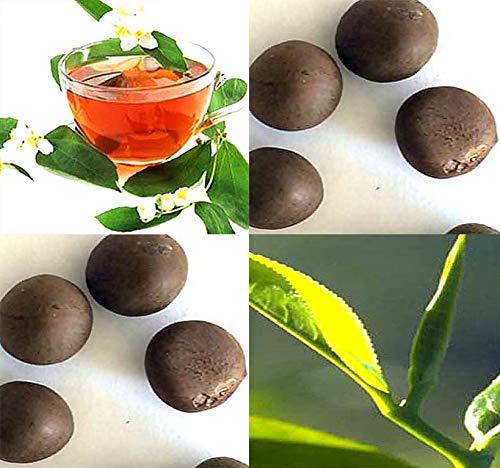Description
- 100 Seed per Pack
- It is an evergreen shrub or small tree that is usually trimmed to below two metres (six feet) when cultivated for its leaves
- This is THE specie of Tea that makes Green, Red, Black Tea, Oolong Tea, and White Tea Depending on How the Tea Leaves are Cooked and processed
- Tea, Tea Plant - Camellia sinensis - Cold Hardiness Zone 7 +
- Quality seeds packaged by MySeeds.Co All seeds sold by MySeeds.Co are Non-GMO based seed products and are intended for the current & the following growing season. "All seeds are produced from open pollinated plants, stored in a temperature controlled facility and constantly moved out due to popularity.
Camellia sinensis (Tea, Tea Plant, Tea Camellia) is an evergreen tree that is widely cultivated for its leaves, which are used to produce tea. Appearance: The Tea Plant is a small to medium-sized tree that can reach a height of 30 to 60 feet (9 to 18 meters) if left unpruned. It has a dense, bushy growth habit with dark green, glossy leaves. The leaves are elliptical or lance-shaped, measuring about 2 to 4 inches (5 to 10 centimeters) in length. Flowers: The Tea Plant produces small, white flowers with yellow centers. The flowers are usually solitary or arranged in clusters and have a delicate and pleasant fragrance. However, for tea production, the focus is primarily on the leaves rather than the flowers. Habitat and Range: Camellia sinensis is native to East Asia, including regions such as China, India, and Japan. It is cultivated in various other countries with suitable climates for tea production. Tea Production: The leaves of the Tea Plant are harvested and processed to produce different types of tea, including green tea, black tea, oolong tea, and white tea. The processing methods involve various techniques such as withering, rolling, oxidation, and drying, which result in the different flavors and characteristics of the teas. Cultivation: The Tea Plant prefers acidic soil and thrives in areas with a humid subtropical climate. It requires well-drained soil, regular watering, and partial shade to full sun exposure. The plant is usually propagated through cuttings or seeds and takes several years to reach maturity for tea production.









































